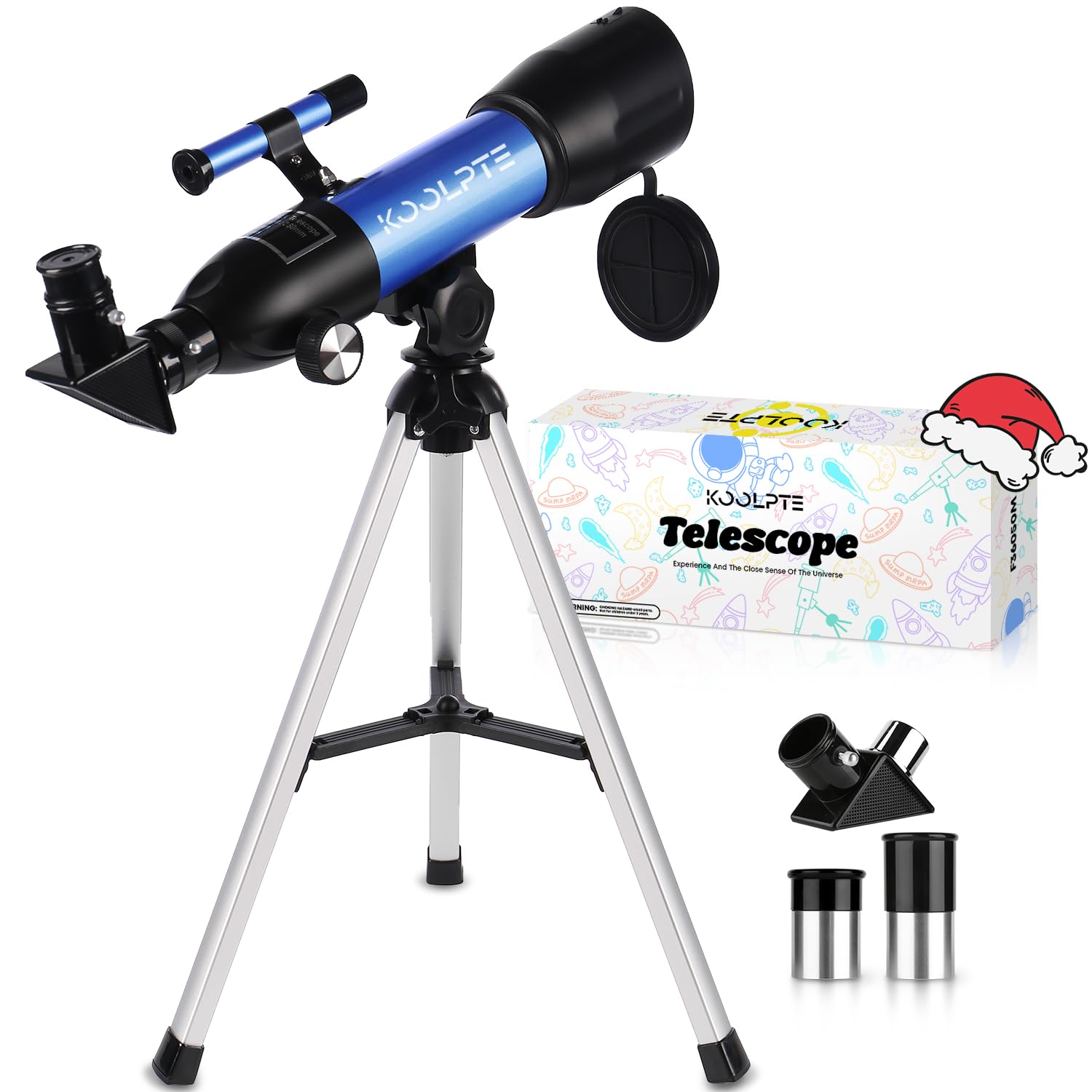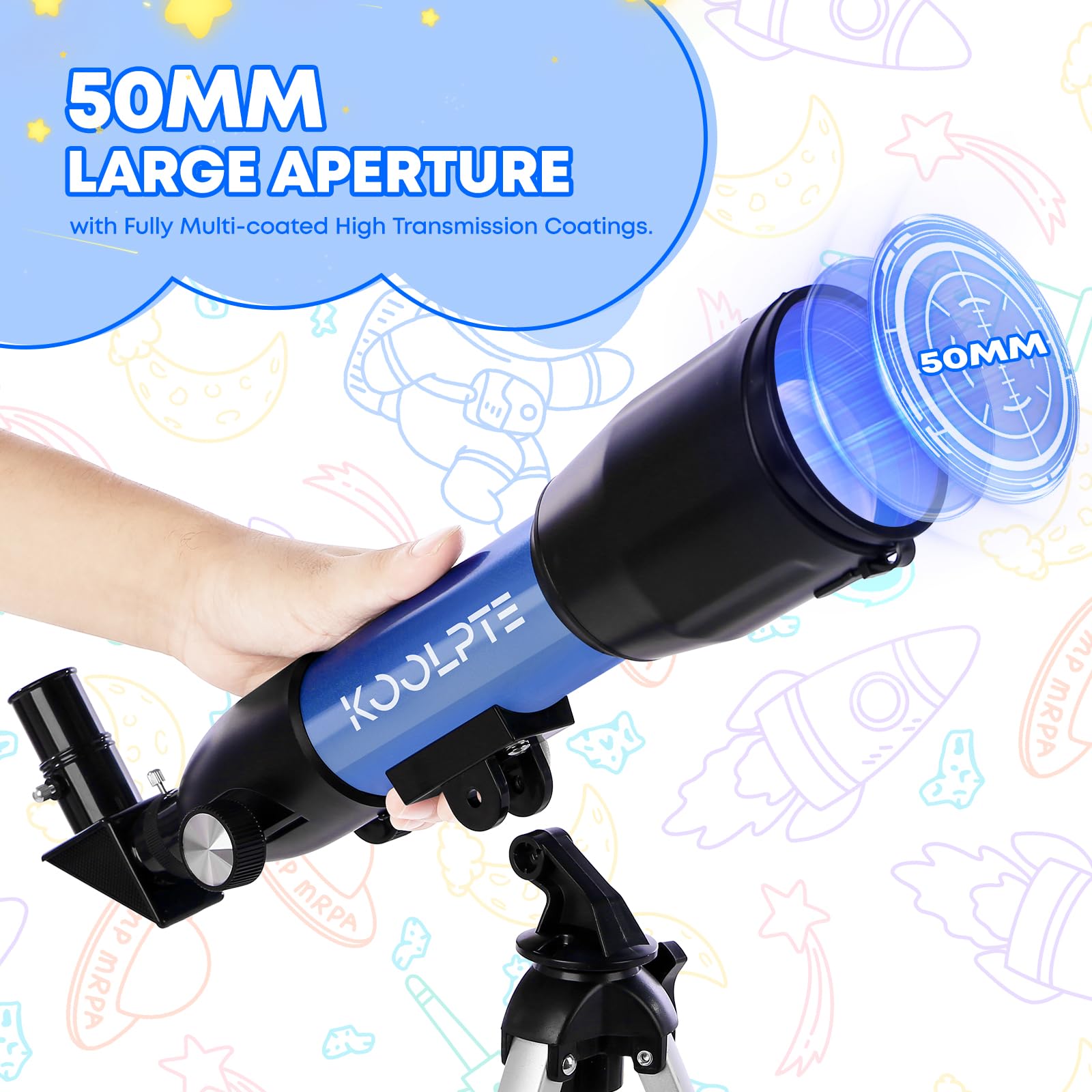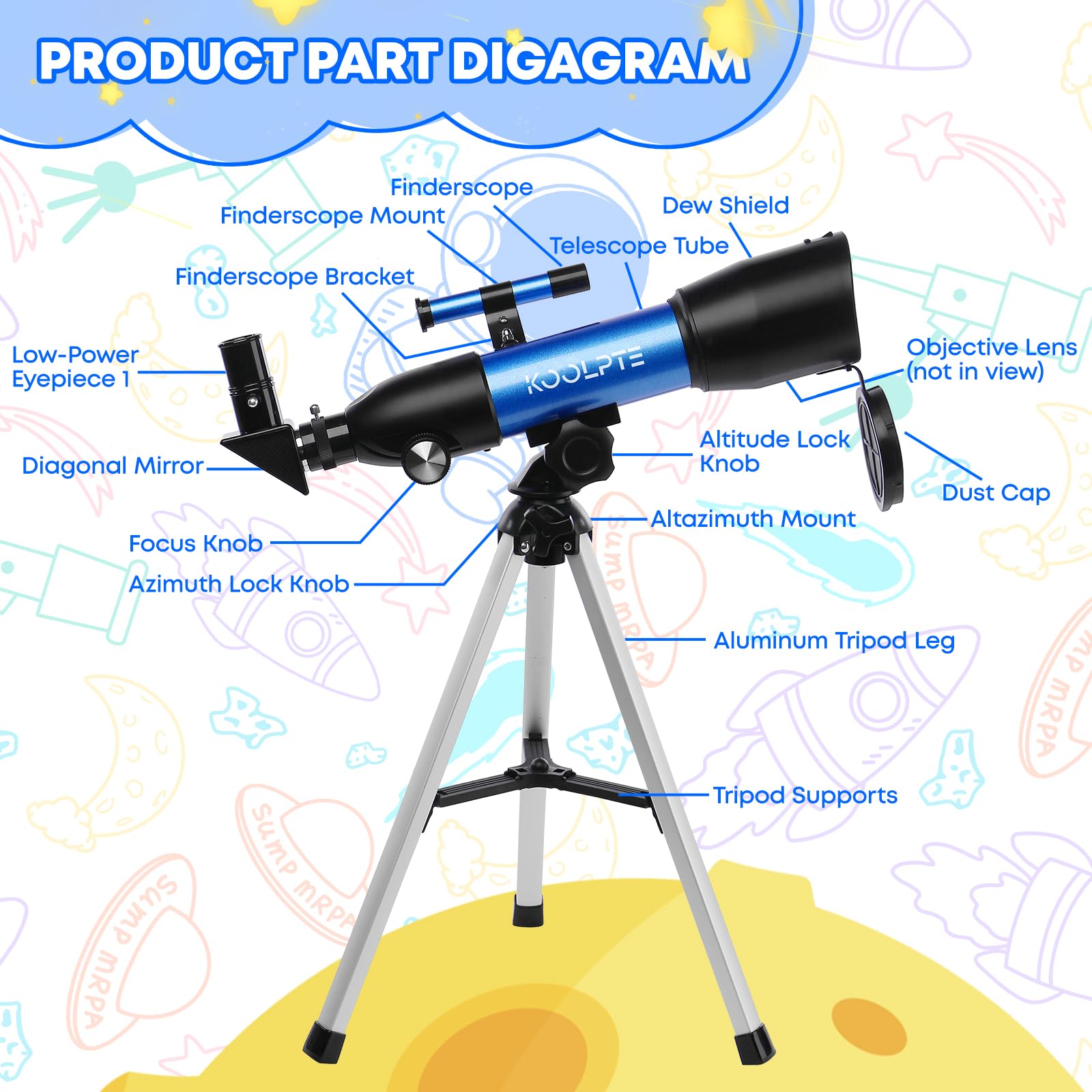[ad_1]
Embarking on a journey through the cosmos has never been more accessible than with the enchanting Koolpte Kids Telescope. Designed specifically for budding astronomers aged 6 to 18, this delightful instrument empowers young inquisitive minds to reach for the stars and delve into a universe this is bursting with wonders.
The 50mm aperture paired with a 360mm focal length provides the perfect portal for children to observe celestial marvels. Picture your little explorer gazing at the moon craters or tracing the bands of Jupiter with sheer delight. Every observation becomes an adventure, as they engage in the captivating art of astronomy, all while equipped with this thoughtfully crafted telescope.
One of the standout features of this telescope is its impressive stability, thanks to a well-designed tabletop tripod that ensures a steady field of view. Young stargazers can simply maneuver the scope as they hone their focus on distant stars and terrestrial wonders alike. With its precise adjustment system, each viewing is marked by clarity and stability, making it easy for kids to capture the essence of the celestial scene unfolding before them.
Portability is key for families eager to escape the hustle and bustle of city lights. The sleek design of the Koolpte telescope makes it remarkably easy to transport. Whether it’s a trip to a distant mountaintop or a simple visit to the backyard on a clear night, this telescope is a reliable companion, ready to guide young earthlings into a world of astronomical observation.
The capability of this telescope extends beyond the realm of stars and planets. Children can cast their gaze upon distant landscapes and wildlife, fostering a love for nature that complements their astronomical pursuits. It is more than just a toy; it’s an educational instrument that encourages exploration and curiosity, broadening horizons while revealing the secrets of both the heavens and the earth.
From the moment your child unboxes this exquisite telescope, they are greeted with the promise of adventure. It is not just about sophisticated optics; it’s about fostering a passion for exploration. With a effortless to handle design and a practical guide, even the most inexperienced stargazers can quickly adapt and start observing the universe. The thrill of discovery is just a turn of the eyepiece away, beckoning a new generation of space enthusiasts to embark on their own cosmic journey.
Your search for the perfect gift ends here—a ticket to endless wonders awaits young explorers with the Koolpte Kids Telescope, where dreams of the universe become reality!
Technical Specifications of Kids Telescope
- Brand: Koolpte
- Model Name: F36050M
- Optical Tube Length: 360 Millimeters
- Objective Lens Diameter: 50 Millimeters
- Eyepiece Lens Description: Nagler
- Telescope Mount Description: Table Tripod
- Product Dimensions: 4’D x 8.1’W x 17.2’H
- Focus Type: Manual Focus
- Finderscope: Reflex
- Lens Coating: Fully Coated
- Recommended Age: 6 to 18 Years Old
- Included Eyepieces: Two
Pros
- Ideal for young explorers aged 6 to 18, sparking an early interest in astronomy.
- Compact 360mm optical tube makes it easy to transport and set up for spontaneous stargazing adventures.
- 50mm aperture allows for decent light gathering, making celestial objects more visible.
- Includes two eyepieces, providing versatility for different viewing experiences.
- Tabletop tripod design offers stability and ease of use, especially for beginners.
- Fully coated lenses enhance image clarity and brightness, enriching the viewing experience.
- Manual focus system empowers users to learn and understand the fundamentals of telescope operation.
Cons
- Limited aperture may restrict viewing of fainter celestial objects, which could disappoint advanced users.
- Manual focus might be challenging for younger users, requiring some patience and practice.
- Tabletop design may not be suitable for all environments, needing a stable surface for optimal use.
- Reflex finderscope might require additional adjustments for precise targeting of objects.
- Potentially less durable than more advanced models, which might be a consideration for active young astronomers.
[ad_2]










